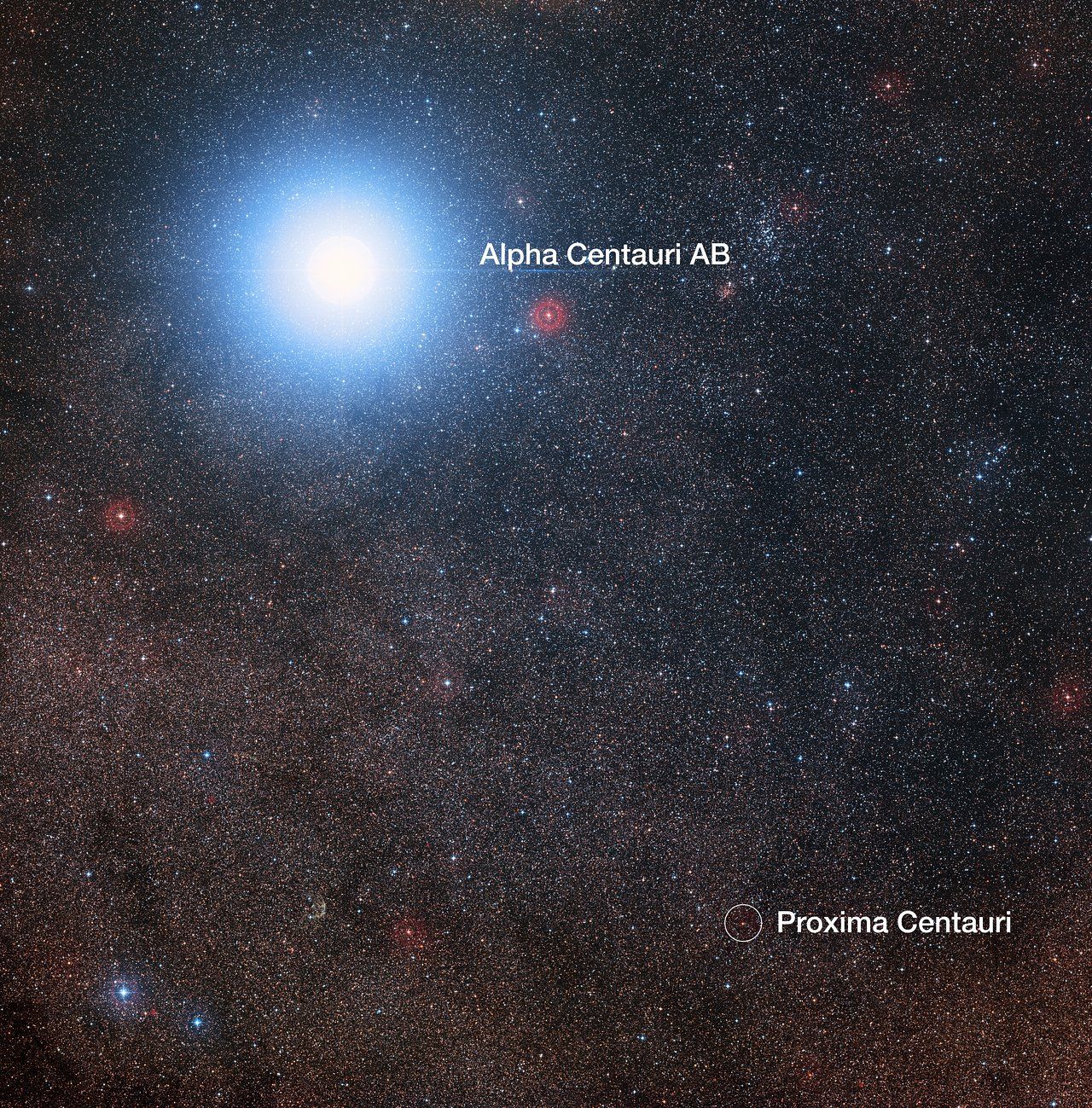Earth is hit by objects from Alpha Centauri ☄️
Follow us on Google News (click on ☆)

This image of the sky around the bright star Alpha Centauri AB also shows the much fainter red dwarf star, Proxima Centauri, the closest star to the Solar System. This image was created from photographs taken by the Digitized Sky Survey 2. The blue halo around Alpha Centauri AB is created during the photographic process; the star is actually a pale yellow color like the Sun. Credit: Digitized Sky Survey 2 - Acknowledgement: Davide De Martin/Mahdi Zamani
Interstellar objects, such as asteroids or comets, are not gravitationally bound to a star. They can come from other solar systems, for example ejected into interstellar space by collisions or subjected to the gravitational slingshot effect of a planet or star.
Cole Gregg, a PhD student in physics and astronomy, developed a computer model to study our Solar System, Alpha Centauri, and the interstellar activity between them. This model simulates interstellar activity in Alpha Centauri, a three-star system, using the physical laws of our solar system.
If the estimates are correct, about one million interstellar objects larger than 100 meters (328 feet) in diameter from Alpha Centauri could currently be in the Oort Cloud, a shell of icy bodies surrounding our Solar System.
The model also predicts that up to 10 meteors from Alpha Centauri could enter Earth's atmosphere each year. However, these meteors would be microscopic in size and pose no danger.
This study opens new perspectives on understanding our galaxy as an interconnected system, where interstellar materials are shared between stars. It highlights the importance of studying stellar systems not in isolation, but in their galactic environment.
The research by Gregg and Wiegert, published in The Planetary Science Journal, shows that exploring neighboring stellar systems can reveal valuable information about the origin of interstellar materials in our Solar System.
What is an interstellar object?
An interstellar object is a celestial body, such as an asteroid or comet, that is not gravitationally bound to a star. These objects can travel through interstellar space, coming from other solar systems.
They are often ejected from their original system by collisions or the gravitational slingshot effect of a planet or star. This allows them to travel great distances across the galaxy.
The discovery of such objects in our Solar System offers a unique opportunity to study the composition and properties of materials from other stellar systems. This enriches our understanding of the diversity and dynamics of our galaxy.
How do interstellar objects reach our Solar System?
Interstellar objects can reach our Solar System thanks to their speed and the gravitational dynamics of the galaxy. They are often propelled by gravitational interactions in their original system.
Once in interstellar space, these objects can be captured by the gravitational field of other stars, including our Sun. This explains why some of these objects may end up in our Solar System.
Studying the trajectories and speeds of these objects allows scientists to trace their origin and understand the mechanisms governing their journey through the galaxy. This opens new perspectives on understanding the interactions between stellar systems.